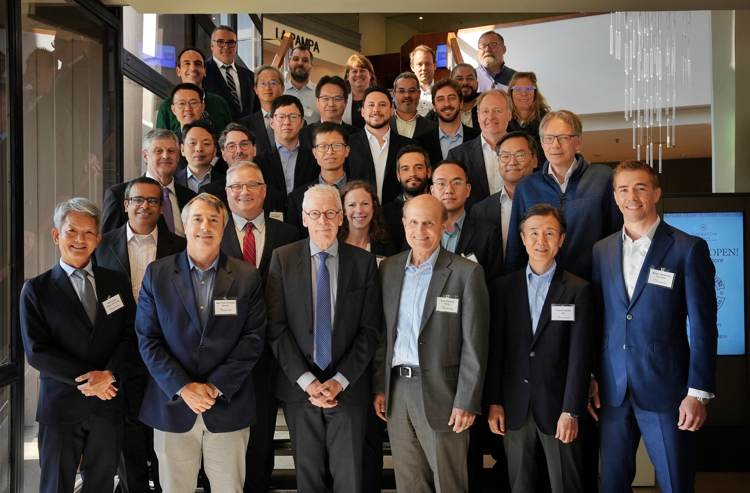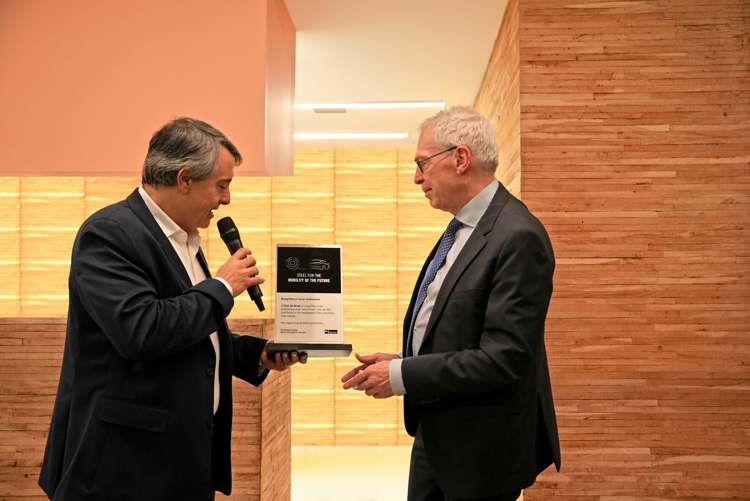
Juan Pablo Pedraza, Global Research and Development Senior Director at Ternium, shares how the company is pushing the boundaries of innovation in the automotive industry through a collaborative approach focused on sustainability.

From June 3 to 5, Buenos Aires hosted the latest edition of the WorldAutoSteel meeting, a global consortium of leading steel producers dedicated to advancing sustainability in the automotive industry. Hosted by Ternium, the event brought together experts from around the world to exchange ideas on the challenges and opportunities shaping the future of mobility.
The timing aligns with Ternium’s decarbonization roadmap. As part of its commitment to reduce emissions by 15% by 2030, the company is investing in low-emission technologies, energy efficiency, the use of scrap metal, renewable energy, and CO₂ capture. Two major milestones on this path are the commissioning of the direct reduction furnace in Pesquería, Mexico, and the wind farm that is already operational in Argentina. In this transformation journey, the automotive industry stands out as a strategic ally to accelerate change.
In this context, Juan Pablo Pedraza, Ternium’s Senior Director of Global Research and Development, highlighted the strategic role played by steel in driving this transformation, emphasizing how the company is contributing to the process through its active involvement in the consortium.
Why did Ternium decide to join WorldAutoSteel?
When we launched the Pesquería Industrial Center, Ternium took on a new role in the automotive market. That’s when we started identifying the key spaces where we needed to be present. We were already part of several product development consortia, but we knew we had to join a more strategic forum. WorldAutoSteel offered exactly that: a collaborative platform aimed at growing steel’s role in the automotive industry, not through competition, but through a shared vision. We officially became full members in 2018, and since then, we’ve continued to deepen our involvement.

What’s changed for Ternium since joining the consortium?
Initially, our role was primarily about listening and learning. But over time, especially in the last four years, we’ve become far more active, particularly through the development of a flagship project that positioned us as one of the leading voices in the group. This experience had a significant impact on how we approach R&D; in fact, we wouldn’t have set up Ternium Lab the way we did without it. Being part of the consortium provided us with a deeper insight into how our products are used, how vehicles are designed, and what performance standards advanced steels need to meet. It also helped us close the gap with some of the industry’s major players.
What conclusions did the Buenos Aires meeting leave, and what's next for Ternium in this industry?
The event left us with two clear takeaways. The first one has to do with the fact that we were able to put forward a truly disruptive proposal for the automotive industry. The second is that steel is once again being recognized for its huge potential to lead this transformation. WorldAutoSteel’s mission is to grow the role of steel in mobility. That means tackling shared challenges, like the rise of aluminum and technologies such as megacasting. The auto industry must reduce its carbon footprint, streamline operations, and cut the number of components. This is where steel can shine, offering smart solutions that combine fewer parts with greater performance.
We’re now entering a new phase of collaboration. We’re looking at 2025 as a year of analysis, laying the groundwork for new technological challenges in 2026. The launch of our electric steel mill in Pesquería, scheduled to commence operation at the end of next year, is crucial for producing low-carbon steels for the automotive sector. We believe it’ll give Ternium a really competitive edge in the years to come. Unlike aluminum, which is heavily dependent on the country's energy matrix where it’s produced—meaning that the size of its carbon footprint depends on the amount of fossil fuel input—our approach, based on natural gas, direct reduction, and renewable energy, is already delivering significant emissions reductions.
You mentioned Ternium's roadmap and the need to produce steel with a lower carbon footprint. Where does the company expect to be in terms of future mobility?
Our aim isn’t to create ultra-specialized niche products, but to lead the way in high-volume, high-impact steels that truly move the needle for the automotive industry. With the upcoming launch of the direct reduction furnace in Pesquería and the progress we’ve made in renewable energy, like the wind farm already operating in Argentina, we’re in a strong position to become the first to produce automotive steel at scale. This is more than a commitment to sustainability. It’s also a strategic advantage over other materials, such as aluminum, which remains heavily dependent on the carbon intensity of the local energy mix where it’s produced.
Why is steel still key to the future of mobility?
Because it brings together innovation, performance, and sustainability. Steel, as such, hasn’t remained in the comfort zone of being a commodity: today, it offers cutting-edge technical solutions that also meet the automotive industry’s growing environmental demands. At Ternium, we firmly believe that the future of mobility is being built with steel. And we’re determined to be a driving force on that journey.